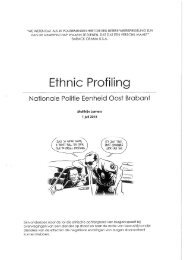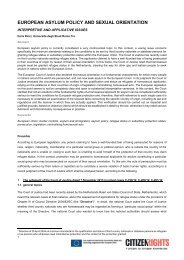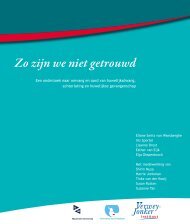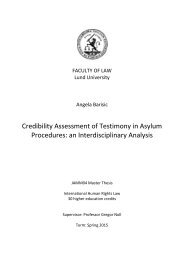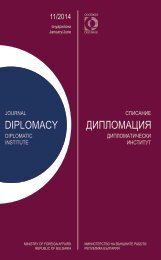AEMI
AEMI-2016-web
AEMI-2016-web
You also want an ePaper? Increase the reach of your titles
YUMPU automatically turns print PDFs into web optimized ePapers that Google loves.
ELISA GOSSO<br />
to idealize the Valleys as a point of reference<br />
for all the Waldensians (through<br />
the creation of museums as well as of<br />
celebrations and, not least, of Waldensian<br />
historic sites, with the consequent<br />
transformation of the landscape into<br />
cultural heritage).<br />
The aim of these introductory remarks<br />
about the cultural definition of<br />
the Waldensian Valleys is to convey the<br />
importance that the Church has always<br />
assigned to cohesion and to the maintenance<br />
of a certain identity for the<br />
Waldensian community. They also allow<br />
us to fathom the constant attempt to<br />
manage migration and prevent chaotic<br />
diaspora. This is also the reason why the<br />
study of the wide variety of forms taken<br />
by Waldensian migrations and colonies<br />
provides a useful and in many ways<br />
unique testing ground to assess some of<br />
the tenets of transnationalism.<br />
Homeland, nostalgia and return<br />
visits<br />
From the Middle Ages to the twentieth<br />
century the Waldensian waves of migration<br />
from the Valleys were mainly due<br />
to socioeconomic causes. The only case<br />
of forced migration because of religious<br />
persecutions was the one of the German<br />
diaspora.<br />
Based on comparative studies of diaspora<br />
histories, many social scientists<br />
have attempted to define the notion<br />
of ‘diaspora’. The conceptualization<br />
proposed by Robin Cohen is helpful<br />
to understand and define the Waldensian<br />
case. Cohen (2008) identifies some<br />
common features of a diaspora that refer<br />
to the displacement from a homeland<br />
and the creation of a collective memory<br />
and a myth about this homeland, the<br />
201<br />
frequent development of a return movement<br />
(not only a definitive return, but<br />
also periodical visits to the homeland),<br />
a strong ethnic group consciousness, a<br />
sense of empathy with co-ethnic members<br />
in other countries and a feeling of<br />
tolerance for pluralism in the host country.<br />
All these features are to be found in<br />
the case of the German Waldensian diaspora<br />
and refer to other key concepts I<br />
will use to analyze the case of German<br />
Waldensian transnationalism.<br />
First of all, the concept of ‘homeland’.<br />
The Waldensians who migrated to Germany<br />
in the late seventeenth century<br />
(de Lange et al., 1999) came all from<br />
a specific place in the Valleys: from the<br />
so-called high Chisone Valley and from<br />
a portion of the low Chisone Valley,<br />
which at that time were both under<br />
French rule, while the other Waldensian<br />
communities in the rest of the Chisone<br />
Valley and in the Germanasca and Pellice<br />
Valleys were subjects of the Duchy<br />
of Savoy.<br />
In 1685 king Louis XIV of France revoked<br />
the Edict of Nantes, which nearly<br />
one hundred years before had conceded<br />
religious and civil freedom to the French<br />
Protestants. The French Waldensians of<br />
the Chisone Valley had to choose between<br />
conversion to Catholicism or<br />
exile. Some of them converted, but the<br />
majority decided to migrate elsewhere.<br />
They joined the stream of migration of<br />
the French Huguenots from their lands<br />
to countries of Protestant tradition, such<br />
as Switzerland and Germany. Waldensians<br />
settled in some areas of south-western<br />
Germany, in Baden-Württemberg<br />
and Hessen. The local lords eager to increase<br />
their population in order to make




